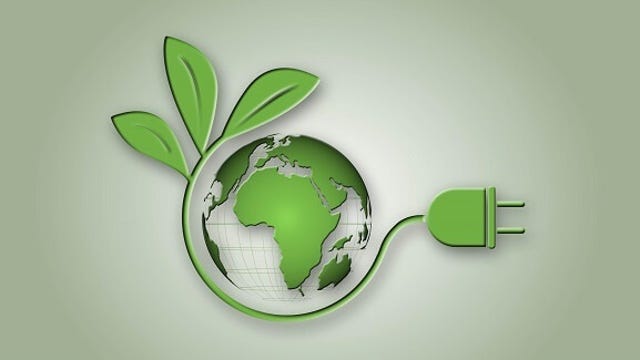by Samuel Greengard, December 22, 2021
Chief information offers, chief data officers and other IT leaders can play a major part in helping organizations build out Environmental, Social and Governance programs.
Climate change represents an existential threat to companies … and civilization. A Harvard Business Review study found that abnormal weather now disrupts the operations and financial performance of 70% of businesses worldwide. In the US alone, the direct cost of climate-related disasters exceeds $630 billion annually, about 3.5% of GDP. Worse, the problem is accelerating. Consulting firm KPMG predicts that climate change will halt global industrial growth within 20 years, and it could unleash economic disaster.
While the business world is rapidly adopting and expanding Environmental, Social, and Governance (ESG) programs, there’s plenty of work to be done, including on the IT front. An October 2021 report from Accenture and the United Nations found that only 16% of organizations have reached an advanced level of net-zero business, and an equal number have achieved an advanced level for measuring and reporting greenhouse gas (GHG) emissions. Marjella Lecourt-Alma, CEO and co-founder of ESG platform Datamaran says that increased collaboration across companies and industries is paramount.
How can CIOs, CDOs, and other IT leaders lead their companies’ sustainability and ESG missions and make meaningful reductions in GHG emissions? Read on for concrete suggestions.

Use AI and Apps to Unlock Insights
According to consulting firm BCG, only 9% of companies measure their total emissions comprehensively. Yet, an array of software systems, tools and apps are available to track GHG generation for IT and the overall business. This includes the Salesforce Sustainability Cloud, apps such as Carbon Analytics and Spherics, and custom algorithms. These tools are increasingly available at app stores and platforms like Xero. “AI and algorithms can absolutely minimize energy use in smart buildings, data centers, and even the grid itself,” notes Paul Hunter, Responsible Business Enablement Lead at consultancy Kin + Carta.
It’s vital to understand how business and technology frameworks generate carbon. There are numerous considerations, notes Bret Greenstein Partner, Data, Analytics and AI at PwC. Organizations must deploy software and systems that measure output, establish a framework for analyzing and understanding data, set up a way to verify results, and develop systems that manage and reduce carbon output. For instance, John Lombard, CEO, Asia Pacific for NTT, says that digital twin platforms that rely on AI can play an important role in optimizing everything from manufacturing to efficient use of buildings.

Get Your Data Sprawl Under Control
Data sprawl is a particularly nettlesome problem, and it leads to overconsumption of resources, PwC’s Greenstein points out. Unfortunately, many organizations lack visibility into what data resides in systems and, as a result, they hold onto unneeded data in storage devices, servers, and clouds. The constant drip of energy consumption is enormous. The answer? Improve data governance and retention policies and focus on code efficiency, website performance and matching video quality with devices. “The more efficiently your website runs, the less energy and processing power you use, and the lower the carbon footprint of your site,” says Radu Micu, Front End Technical Director at Kin + Carta.

Embrace the Circular Economy for Technology
The concept of the circular economy has been around for a while, but it’s now taking off in a big way. NTT’s Lombard says that it’s a key to getting to net zero. This means establishing business and IT supply chains that focus on optimizing the lifespan of equipment, moving toward zero-emission closed loop recycling and curtailing e-waste. For example, there’s a growing second-hand market for high-end gear, including hyperscale infrastructure. Companies like IT Renew recertify these systems and place them under warranty. “Everyone wins,” says Lucas Beran, principal analyst at consulting firm Dell’Oro Group. “The original user gets two or three years of use; the buyer gets another three or four years — all while TCO and the carbon footprint drop.”

Rethink Datacenter Performance Metrics
Data centers are expected to consume about 8% of the world’s electricity by 2030. While refreshing legacy servers, optimizing data, virtualizing workloads, consolidating virtual machines and green hosting all deliver benefits, these strategies aren’t enough to tackle climate change. Organizations must fundamentally rethink data center design and function. “Without complete, standardized comprehensive metrics, it’s difficult or almost impossible to evaluate performance or compare data centers,” states Steve Carlini, Vice President of Innovation and Data Center for Schneider Electric. This requires IT leaders to think more broadly about sustainability and understand things like Renewable Energy Factor (REF) and carbon intensity, adds Carlini.

Upgrade Datacenter Climate Control & Cooling Systems
In some instances, it’s possible to reduce energy dependence by placing data centers in geographic areas where the outside air produces natural cooling. It’s also sometimes feasible to locate facilities next to water sources and tap hydroelectric power. But the reality is that these approaches aren’t always possible. What then? Gartner estimates that air economizers can pull 40% to 90% of the cooling required for data centers. It’s also possible to recirculate heat into other parts of the building and use smart climate control systems to reduce power consumption. Fuel cells, zero water thermal systems and long-duration energy storage systems, including battery energy storage systems (BESS) are also feasible, says Rob Johnson, CEO of infrastructure firm Vertiv.
Over the last few years, immersive cooling, which uses specialized fluids to better manage heat, has matured to the point where it delivers real-world benefits, Dell’Oro Group’s Beran says. While air-based cooling typically delivers a PUE of about 1.1 to 1.2, immersion lowers the figure to about 1.03 or better. “You wind up using very little energy,” he says. Beran says the technology is ready for primetime and believes that fears about leaks are overblown. “The main problem is cultural resistance to change.”

Put Pressure on Supply Chain Partners
Some companies aren’t satisfied with carbon neutral status, they’re looking to move to carbon negative. One example is Microsoft, which hopes to embrace the latter goal by 2030. The firm has focused on many conventional methods, including using the most efficient components and systems available and working with supply chain partners to reduce GHGs — but it also has adopted some novel approaches. For example, the company instituted an internal carbon tax to cover Scope 3 emissions. Each division of Microsoft must pay the fee based on its carbon emissions, and the funds are used to invest in sustainability improvements.

Gamify Sustainable IT Efforts
It’s been said a million times: great ideas come from all sorts of places — and people. Yes, there’s the old-fashioned suggestion box. But PwC’s Greenstein says that the thinking doesn’t have to stop there. Internal contests and competitions can yield remarkable results. “Companies can open up hackathons to IT professionals and power users with the goal of increasing business value with reduced IT footprint. These people will find ways to use the cloud, for example using machine learning to optimize server instances or using AI to do computations at the edge,” he explains.

Benefit the Bottom Line
Battling climate change isn’t just good for the world, it makes business sense. Research shows that sustainable companies outperform their competitors.
“Sustainability is a great opportunity for companies to demonstrate their leadership while complying with new regulations. Companies that drag their feet on this will eventually comply, but they will not receive any benefit from being early in the journey,” says PwC’s Greenstein.
“Through technology and innovative thinking, we can discover insights that help business executives make the right decision and drive strategic opportunities around sustainable development,” says Jérôme Basdevant, CTO, Datamaran. “Sustainability represents a big opportunity for tech leaders.”
Collected at: https://www.informationweek.com/cloud/8-real-ways-cios-can-drive-sustainability-fight-climate-change?slide=1
